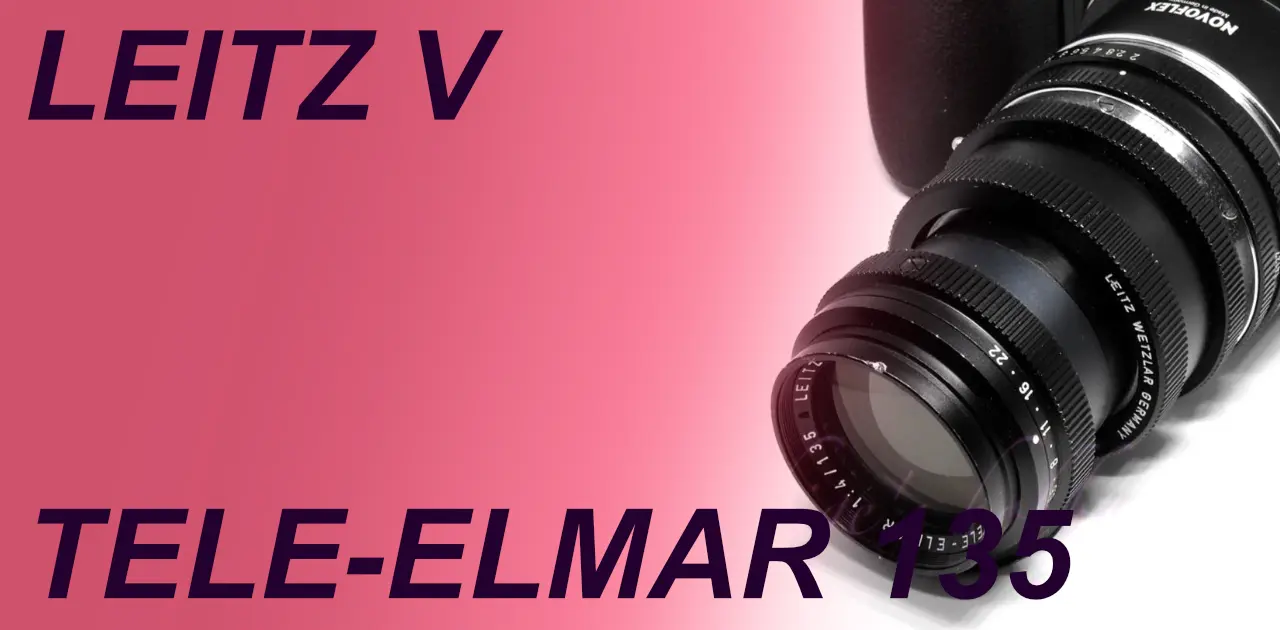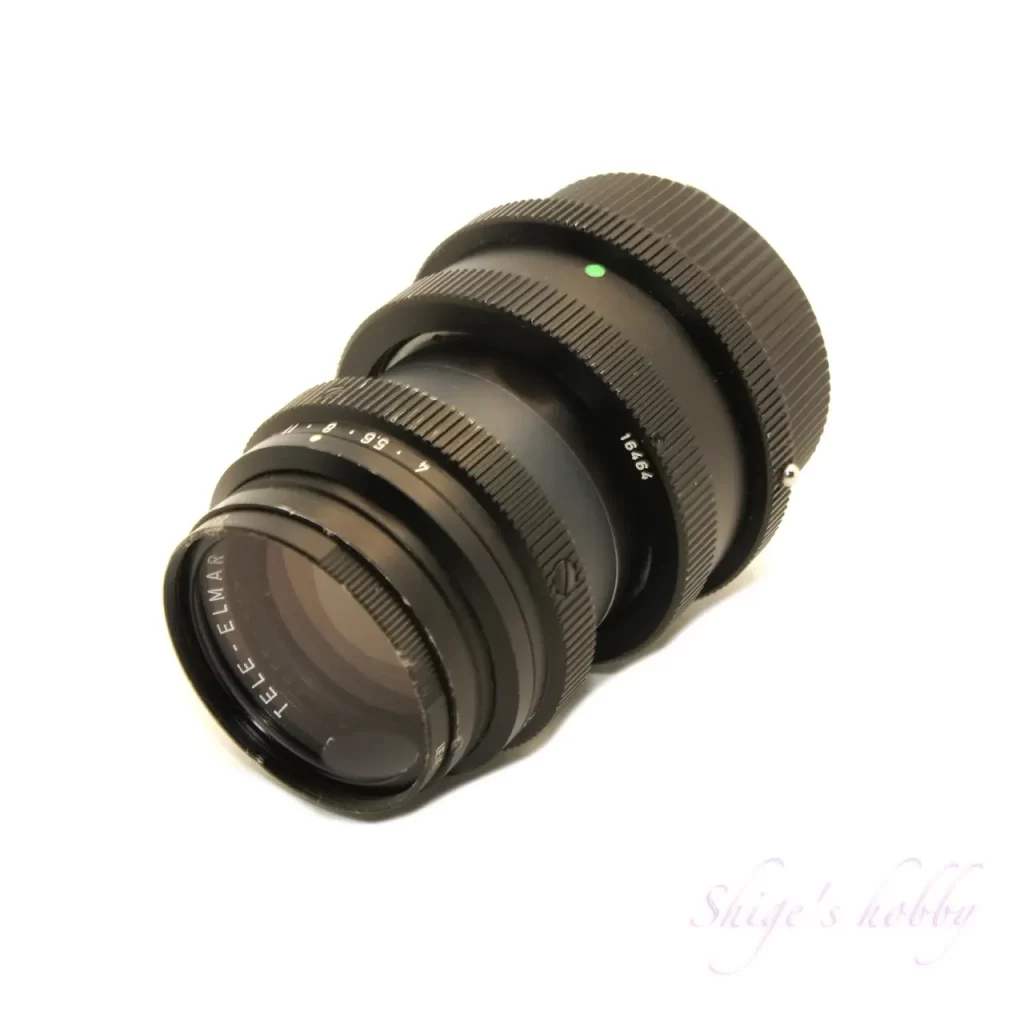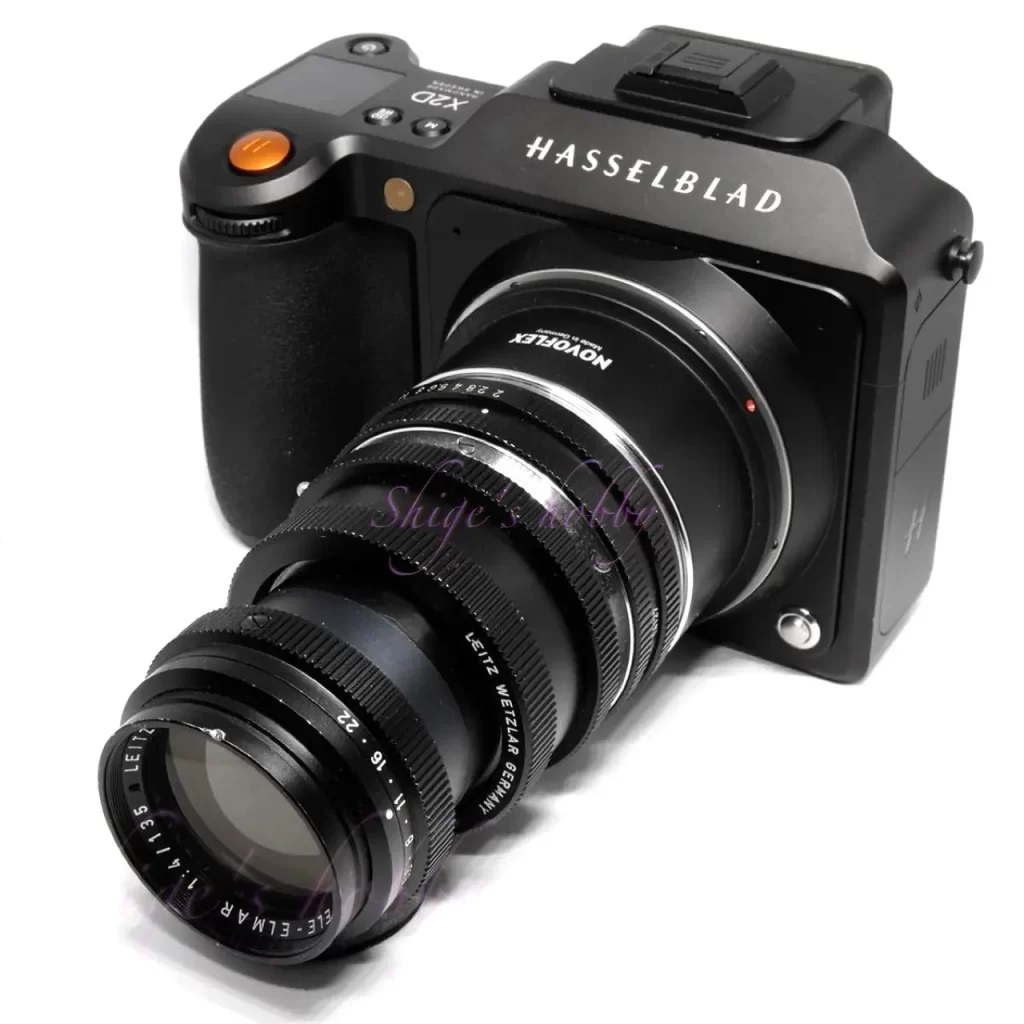LEITZ TELE ELMAR 13.5cm F4

Are there any fans of the 135mm prime lens? Part 1
A review and Photo example of the LEITZ TELE ELMAR 13.5cm F4.
Table of contents
Gallery
- The sample photo were taken with the HASSELBLAD X2D.
Review


1.Usage
As I have written elsewhere, the 135mm focal length is an unfortunate focal length that has been swallowed up by zoom lenses.
The Tele-Elmar I will introduce this time is also a 135mm Leica M-mount prime lens. It is an old type made before 1992, and I got it for a few thousand yen. The 2,700 lenses with new lens barrels made after 1992 are modern lenses with built-in hoods that are exclusive to the M-mount.
Even with an aperture of F4, the focus accuracy of the Leica M rangefinder camera’s double image matching is questionable, so before mirrorless cameras became popular, M-mount lenses with a focal length of 135mm were converted to a VISOFLEX mount and used with SLR cameras.
The VISOFLEX here is not an EVF for Leica M digital, but a general term for the mechanism that adds a SLR mirror box to a rangefinder camera.
Since mirrorless cameras have a short flange back, the Leica M mount can be attached to the camera without any problems, so I don’t think there are many users who use the VISOFLEX options described below, but I hope that this will be helpful for those who use old SLR cameras for nostalgia.
When using this lens with an SLR camera, a short helicoid called 16464/OTZFO is used. This is the same as the one used in the Viso-Elmar 65mm, and is available in silver and black. Second-hand items can be purchased for around 10,000 yen. There is a large stock on the second-hand market, so it is not difficult to obtain, but since it is a fairly old item, care must be taken with the extension state. Second-hand items are often found to be loose with no grease, so it is recommended to check the actual item before purchasing. A helicoid with the correct grease allows for smooth extension.
With an aperture value of 4, darkness isn’t too noticeable when viewed through a SLR viewfinder, and the focus isn’t as strict as with the Elmarit 135 F2.8, so if you can put up with F4, you can enjoy sharp resolution that is still relevant in the digital age.
2.Lens overview
The Tele-Elmar 13.5cm is a Leica M mount lens, but the lens part of Leica M mount lenses with focal lengths of 90mm or more, such as the Tele-Elmar 13.5cm, Elmar 13.5cm (F4 and F4.5), Hector 13.5cm, Elmar 9cm, Summicron 90mm, and Elmarit 135mm, can be separated from the M mount helicoid. The separated lens can be changed to the old VISOFLEX VISOFLEX-M and VISOFLEX-L39 by using a special helicoid.
To use the Tele-Elmar with the VISOFLEX, it can be changed to the VISOFLEX-M using the helicoid 16464/OTZFO used with the VISOFLEX Elmar 65mm.
To use the VISOFLEX-M with the Leica R mount, a Leica M (VISOFLEX-M) to Leica R mount lens adapter called Leica 14167 is also added.
The minimum shooting distance is 0.9m because the helicoid 16464/OTZFO has a relatively long extension, making it a lens that can get close to the subject. When using an M-mount helicoid, the minimum shooting distance is 1.5m.
The Elmar 13.5cm (F4) and Hector 13.5cm can be converted to VISOFLEX-L39 by attaching them to a dedicated short helicoid.
The VISOFLEX-L39 can be converted to a VISOFLEX-M mount by using OUBIO/16466.
3.Middle size sensor digital camera
When using the Tele-Elmar with the XASSELBLAD X2D, it is equivalent to 108mm in 35mm format. It completely covers the 44 x 33mm sensor size of digital medium format cameras, and the image circle width that was said to be no problem with 645 in the film era is indeed correct.
There is no quirk in either the front or back bokeh, and there is no strange, swirling bokeh. Even at F4, the focus is faint and it is possible to shoot with the in-focus area emphasized. The above photo shows a four-layer stack of the lens body + OTFZO (16464) + 16466M + NOVOFLEX R-X mount adapter.
4.About Ininity
I had been wondering about the infinity focus, so I checked to see where the dimensions were off. As a result, I found that the protective ring that covers the gap between the lens head and OTFZO (16464) was too thick.
Specifically, when the protective ring was removed and the helicoid and lens were attached, the gap was 6.7 mm, and there was no problem because the lens focused at infinity in this state. When I measured the thickness of the protective ring, it was 7.5 mm, 0.8 mm longer than the 6.7 mm without the protective ring, so when the protective ring was attached to the lens, the lens was extended by 0.8 mm from the beginning, and I found that the lens could not be used at infinity.
The protective ring is made of aluminum, so I took pictures at infinity while gradually scraping the protective ring with sandpaper, and when the protective ring was scraped off by 0.6 mm to a thickness of 6.9 mm, I was able to take pictures at infinity. I scraped it down with 200-grit sandpaper, but I think it would be better to have an electric machining machine such as a lathe for this kind of situation.
Without the protective ring, 6.7mm seems to be over-inflated (beyond infinity).

In order to use the lens at infinity, the flange back of the camera is important. The flange back of the Leica mount is shown below.
| Mount name | Frange back size | note |
| L mount | 20mm | For digital mirror less camera |
| M mount | 27.8mm | |
| L39 mount | 28.8mm | The L/M mount adapter is 1mm thick. |
| R mount | 47.4mm | R-M mount adapters are provided by various companies. |
| S mount | 53.3mm | Since I can’t find an official value for the flange back, I’ll write the value by subtracting the thickness of the S-C645 adapter, 10.7mm, from the CONTAX 645 mount’s 64mm. |
| VISO-M | 68.8mm | If you use 14127, it becomes R mount. |
| VISO-L39 | 91.1mm | If you use OUBIO/16466, it will be a VISO-M mount. |
Specification and Competitor
| Item | Tele Elmar | Elmar | Hektor | Elmar |
| focal length(mm) | 135 | ← | ← | ← |
| Maximum aperture | 4 | ← | 4.5 | ← |
| Minimum aperture | 22 | 32 | ← | ← |
| Lens configuration | 5elements in 3groups | 4elements in 4groups | 4elements in 3groups | ← |
| Minimum distance(m) | 1.5 (M-mount) | ← | ← | 1.5 (L39-mount) |
| Lens length(mm) | 63.6 (VISOFLEX-M) | 62.5 (VISOFLEX-L39) | 63.6 (VISOFLEX-L39) | 124 (L39) |
| Lens max diameter(mm) | 60 | 52 | ← | ← |
| Filter diameter(mm) | 39 | ← | ← | ← |
| Lens Hood | IUFOO 12575 | ← | ← | ? |
| Weight(g) | 342 (VISOFLEX-M) | 165 (VISOFLEX-L39) | 247 (VISOFLEX-L39) | 517 (L39) |
| Production Numbers | 28,300- | 25,900- | 108,088 | 5,500- |
| Release date | 1964〜 | 1960-1963 | 1933-1960 | 1931-1937 |
Reference links
- LEICA Wiki TELE ELMAR 4/135
- LEICA Wiki ELMAR 13.5cm F4
- LEICA Wiki HEKTOR 13.5cm F4.5
- LEICA Wiki ELMAR 13.5cm F4.5
Update history
- 2024.10.5
- 2024.05.21
- 2023.03.25
Affiliate links
- Please see the disclaimer regarding advertising here.
- Italicized links in the text are advertisement links that take you to other sites.
- Leica Lens・Ads by Amazon
- Leica Books・Ads by Amazon


Leave a Reply